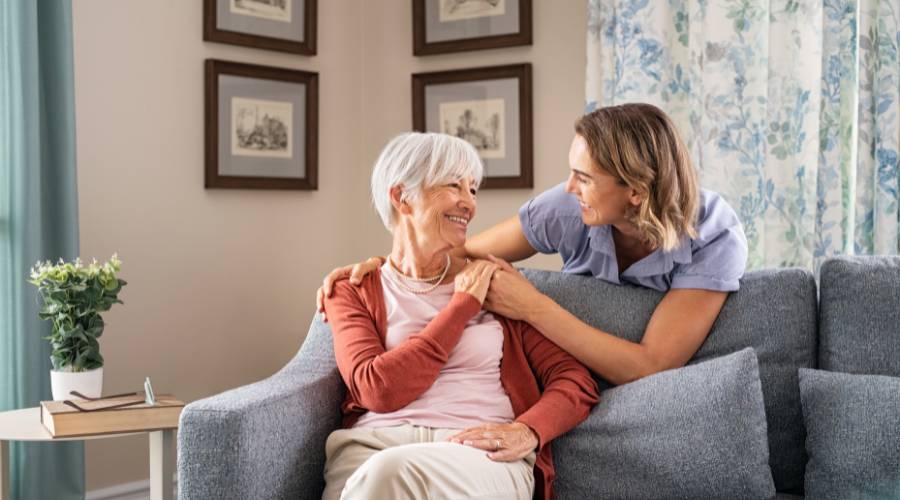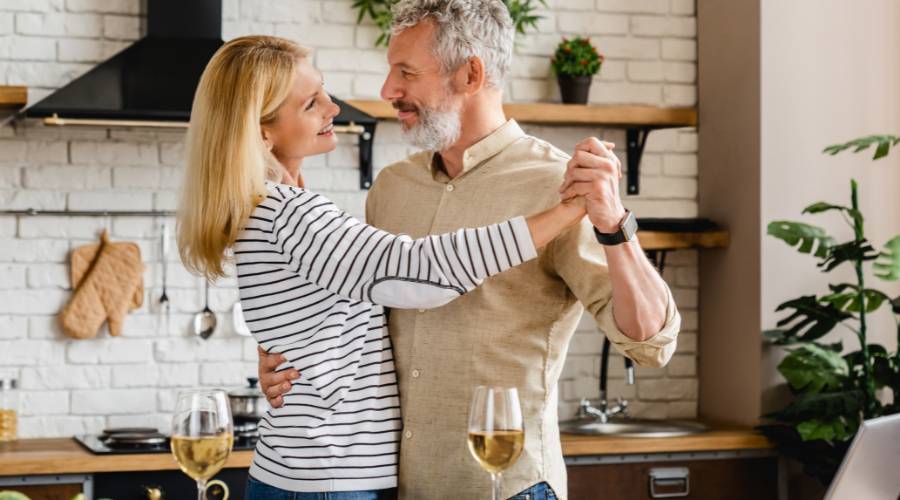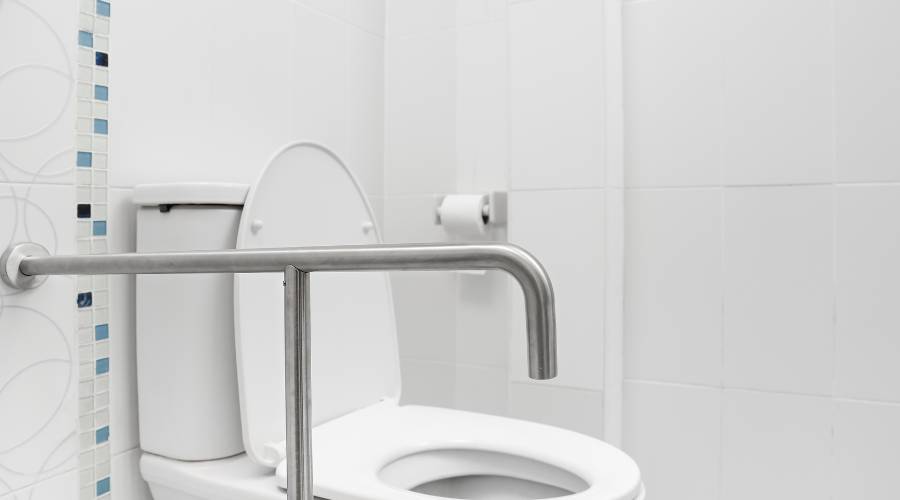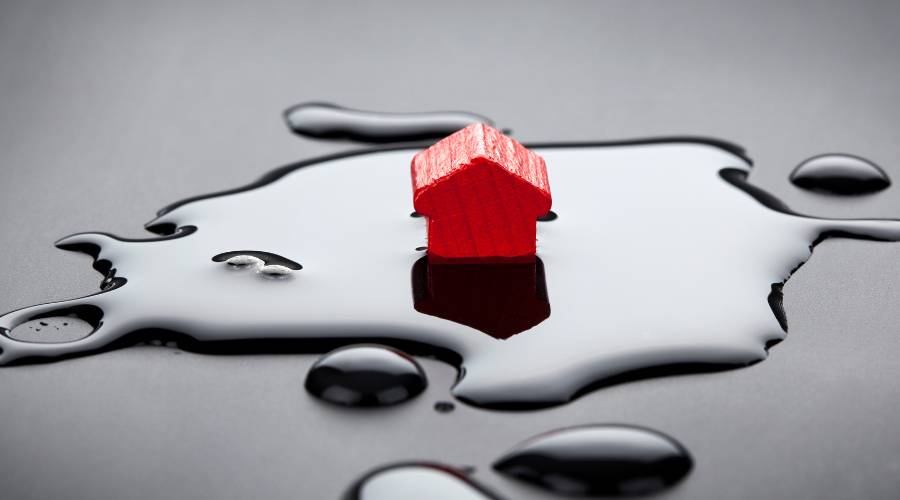Aging in place refers to the ability of older adults to live independently and comfortably in their own homes for as long as possible. This concept is becoming increasingly significant in home design, especially for those who wish to maintain their autonomy and avoid the need for assisted living facilities.
Interior design principles play a crucial role in facilitating long-term living arrangements. By incorporating thoughtful design elements such as wide hallways, lever-style door handles, and well-lit spaces, homes can be transformed into safe and accessible environments for seniors.
In this article, readers will discover:
- Essential interior design principles tailored for aging in place.
- Practical tips to integrate safety features and enhance comfort.
- Solutions to create functional spaces like bathrooms and kitchens that cater to seniors’ needs.
- Insights on using technology to support independent living.
By understanding these principles, homeowners can effectively plan renovations that not only ensure safety but also promote a high quality of life for aging residents.

Understanding Aging in Place Design
Aging in place design is a thoughtful approach that allows older adults to live independently and comfortably in their homes as they age. By incorporating specific interior design principles, we can create environments that address the evolving needs of seniors, ensuring both safety and accessibility.
Universal design principles serve as the foundation for aging-in-place homes. These principles focus on creating spaces that are usable by people of all ages and abilities without the need for adaptation. Key elements include:
- Accessibility: Ensuring that spaces are easily navigable for individuals with mobility aids such as wheelchairs or walkers.
- Safety features: Integrating elements like grab bars, non-slip flooring, and adequate lighting to prevent accidents.
By embedding these principles into the home environment, we support older adults in maintaining their independence and quality of life. For example, wide hallways and doorways facilitate easy movement, while lever-style door handles offer effortless operation for those with arthritis or limited strength.
Incorporating universal design principles not only benefits seniors but also enhances the overall functionality and appeal of the home for all occupants. This approach ensures that the living space evolves seamlessly with its residents’ needs, providing a safe, comfortable, and sustainable environment for long-term living.
Essential Interior Design Principles for Aging in Place Homes
Wider hallways and doorways make all the difference when designing homes that support long-term living. Mobility aids such as wheelchairs, walkers, or walking frames require ample space to manoeuvre safely—narrow corridors can quickly become barriers. In Sydney’s older homes, retrofitting wider corridors (at least 900mm–1200mm where possible) enables seamless movement throughout the house and reduces the risk of bumps or falls.
Key design choices add genuine day-to-day comfort:
- Wide Hallways & Doorways:
- Accommodate mobility aids without tight turns or awkward navigation.
- Support carers who may need to assist side-by-side.
- Future-proof the home for changing needs, avoiding costly modifications down the track.
- Lever-Style Door Handles:
- Far easier to operate than traditional round knobs, especially for anyone with arthritis or reduced grip strength.
- Eliminate twisting motions—simply push down to open doors, even with an elbow if hands are full.
- Stylish finishes blend seamlessly into any aesthetic, from classic Federation homes in the Inner West to contemporary apartments across Sydney’s North Shore.
These small but significant details create a living environment where both independence and dignity are prioritised. Everyday tasks such as moving through a hallway at night or opening a door while carrying groceries become effortless, empowering residents to remain in their own homes with confidence.
1. Prioritising Safety Features in Aging in Place Design
Safety becomes the foundation of effective aging-in-place home design, addressing everyday risks that can impact older adults’ independence and peace of mind. As people age, balance, vision, and mobility may change, making small hazards, like a slippery floor or an awkward stair, r—potential threats.
Key safety features for a secure and comfortable home environment:
- Grab Bars:
- Installing sturdy grab bars in bathrooms and toilets offers critical support for standing, sitting, or moving between surfaces. Placement next to showers, bathtubs, and toilets helps prevent slips and gives users confidence with daily routines.
- Non-Slip Flooring Materials:
- Smooth tiles or polished timber may look beautiful, but can become hazardous when wet. Choosing non-slip flooring throughout high-risk areas—such as bathrooms, kitchens, and entryways—reduces fall risk dramatically. Options like textured porcelain tiles or slip-resistant vinyl are both practical and stylish.
- Handrails:
- Secure handrails on both sides of staircases and along hallways provide steadying support for those with limited balance or strength. Well-positioned rails make it easier to navigate the home safely at any time of day.
“After my mum had her bathroom renovated with non-slip flooring and new grab bars, she felt so much safer showering on her own,” shares Helen from North Sydney—a reminder that thoughtful details can restore confidence and independence.
Balancing these features with the overall aesthetic creates spaces that feel welcoming without compromising on safety.
2. Enhancing Lighting Conditions for Seniors’ Comfort and Safety
Clarity and comfort in lighting make a significant difference in everyday living, especially for older adults. Diminished vision is a common part of ageing, and shadows or dim spaces can increase the risk of trips and falls, a leading cause of injury among seniors in Sydney homes.
Key strategies for effective lighting:
- Indirect Lighting:
- Soft, indirect lighting reduces glare and harsh contrasts that can strain ageing eyes. By using cove lights or wall-mounted fixtures that bounce light off ceilings and walls, you create even illumination throughout living spaces. This approach is especially helpful in hallways and lounge areas where sudden changes in brightness can be disorienting.
- LED Fixtures:
- Opting for energy-efficient LED fixtures offers bright, consistent light with minimal maintenance. LEDs don’t just lower energy bills; they also provide a range of colour temperatures to suit different rooms—warm whites for bedrooms, cooler tones for kitchens. Their long lifespan means less need for bulb replacements, reducing hassle for homeowners.
- Motion Sensors:
- Installing motion sensor lights adds an extra layer of safety and convenience. Automatic illumination when someone enters a room or walks down a corridor prevents fumbling for switches at night. In bathrooms or stairwells, this simple technology greatly reduces fall risks without requiring any extra effort from the user.
Relying on thoughtful lighting design supports both safety and independence, allowing seniors to move confidently through every part of their home.
3. Designing Functional Bathrooms That Cater to Seniors’ Needs
A well-designed bathroom can make a world of difference for seniors wishing to remain independent and safe in their own homes. The focus is on creating a space that enables easy movement, reduces fall risks, and supports dignity through thoughtful features.
Key features for an age-friendly bathroom:
- No-threshold walk-in showers: A step-free, barrier-free entry removes tripping hazards and allows those with limited mobility or wheelchairs to access the shower safely. These showers are increasingly popular in Sydney renovations for both safety and sleek, modern aesthetics.
- Adjustable-height handheld showerheads: Flexibility matters—handheld showerheads mounted on a vertical slide bar accommodate users of varying heights and abilities. This simple detail empowers independence, especially for those who may prefer seated showers.
- Lever faucet handles: Traditional twist taps can be challenging for anyone with arthritis or reduced hand strength. Lever handles offer effortless operation and are available in a range of stylish finishes to suit any décor.
- Strategic grab rail placement: Installing sturdy grab bars near the toilet, inside the shower, and by the bath provides reliable support where it’s needed most.
Sydney Renovation Group often recommends non-slip flooring materials throughout the bathroom to further enhance safety without compromising style. With careful planning and the right features, bathrooms become welcoming spaces that support comfort, confidence, and daily routines as clients’ needs evolve.
Next steps include rethinking kitchen design to ensure independence flows throughout every part of the home.
4. Planning a Senior-Friendly Kitchen Space That Promotes Independence
Creating a kitchen that supports independence and ease of use is essential in aging-in-place home design. Ensuring the space is both functional and accessible makes daily tasks manageable for seniors.
Key Elements to Consider:
- Accessible Seating Options: Incorporate seating surfaces at different heights, such as low stools or chairs with armrests. This allows for comfortable resting spots during meal preparation or socialising.
- Easy-Grip Cabinet Handles: Replace traditional knobs with D-type pulls on cabinetry. These handles are easier to grasp and require less force to open, making them ideal for individuals with limited hand strength.
- Wheelchair Maneuverability: Design the kitchen layout with ample space between counters and islands for wheelchair access. Aim for at least 1200mm wide pathways to facilitate smooth movement.
Additional Recommendations:
- Lowered Countertops: Install countertops at varying heights to accommodate seated users and those who may need wheelchair access.
- Pull-Out Shelves: Use pull-out shelves within cabinets to minimise bending and reaching, ensuring items are easily accessible.
- Touch-Activated Faucets: Implement touch or sensor-activated faucets for ease of use, particularly beneficial for individuals with arthritis or dexterity issues.
These thoughtful design choices will help create a senior-friendly kitchen that enhances independence and ensures a safe, comfortable cooking environment.
5. Navigating Layout Considerations for Enhanced Accessibility Throughout the Home
A well-planned layout is the backbone of an accessible home, especially for those aiming to age in place with comfort and confidence. Thoughtful design choices can make daily movement easier and safer, reducing fatigue and minimizing the risk of accidents.
Key layout strategies to consider:
- Master bedrooms on ground floor: Locating the primary bedroom on the ground level eliminates the need for repeated stair use, supporting residents whose mobility may change over time. This arrangement offers both safety and convenience, particularly during nighttime hours.
- Clear pathways and open spaces: Wide, unobstructed walkways—ideally at least 900mm across—help accommodate wheelchairs or walking frames. Removing unnecessary furniture from traffic zones creates a smoother flow between rooms.
- Colour or texture contrasts on flooring: Subtle changes in colour or texture between rooms or at thresholds can help those with diminished eyesight detect transitions more easily. For example, using a slightly darker tile in the kitchen than in adjoining living areas signals a change in space without creating visual clutter.
- Minimised level changes: Where possible, maintain a single-level floor throughout the home. If steps are unavoidable, add clear markings or gentle ramps to improve safety.
“Choosing smart layout solutions means older adults can stay independent longer—enjoying every corner of their Sydney home without barriers.”
Careful consideration of these factors ensures every room feels accessible and welcoming, supporting both physical needs and peace of mind as life evolves.
6. Integrating Technology Solutions That Benefit Older Adults’ Daily Lives
Smart home technologies are reshaping how older adults experience independence and peace of mind in their own homes. Thoughtful integration of these innovations can empower seniors, giving both them and their loved ones reassurance that safety and comfort are always within reach.
User-friendly interfaces are key for successful adoption. Devices with large buttons, voice activation, and simple displays make daily tasks less taxing. Here are some practical examples well-suited to aging in place environments:
- Smart lighting systems: Automated lights can be programmed to turn on at set times or respond to motion, reducing the risk of trips and falls during the night.
- Voice-controlled assistants: Devices like Amazon Echo or Google Home allow users to make calls, set reminders for medication, control appliances, or check the weather—without needing to navigate complex menus.
- Video doorbells and smart locks: These provide security with real-time video, two-way communication, and remote access—all manageable from a smartphone or tablet.
- Emergency alert systems: Wearable pendants or watches can instantly connect users to emergency services if help is needed.
Many Sydney homeowners now ask for discreet integration of technology during renovations—blending safety with style while keeping spaces easy to use for all ages. Smart solutions, tailored to individual needs, create homes where staying independent doesn’t mean sacrificing comfort or dignity.

7. The Importance of Comprehensive Planning Beyond Design Elements Alone
While designing a home for aging in place focuses on physical elements, it’s equally important to consider other factors that contribute to long-term living success. A comprehensive plan encompasses the following key areas:
- Health Status Consideration: Understanding the homeowner’s current health and possible future conditions is critical. This might involve consulting healthcare professionals to ensure the home design accommodates evolving medical needs.
- Support Systems Evaluation: Assessing available support networks, including family, friends, and community resources, is vital. A strong support system can provide essential assistance and peace of mind for older adults living independently.
- Financial Assistance Options: Evaluating financial resources to sustain long-term living plans ensures that renovations are not only completed but maintained over time. Exploring options such as government grants, insurance coverage, or reverse mortgages may help in funding necessary modifications.
By integrating these considerations, homeowners can create a living environment that supports their changing needs while ensuring safety and comfort. This holistic approach ensures that both practicalities and personal well-being are prioritised in aging in place home design.
Conclusion
Balancing practical features with beautiful design enables seniors to remain at home, preserving both dignity and joy. A thoughtfully crafted environment—one that supports independence, maintenance, and quality of life enhancement—makes daily routines easier and fosters a genuine sense of belonging. With the right approach to aging-in-place home design, each detail becomes an investment in comfort and peace of mind for years to come. Sydney families deserve spaces that feel safe, familiar, and uplifting, proving that long-term living can be stylish as well as secure.
What is aging-in-place home design, and why is it important?
Aging in place home design refers to creating living environments that allow older adults to live independently and safely in their own homes for as long as possible. It is important because it supports long-term living arrangements by incorporating accessibility, safety, and comfort tailored to seniors’ needs.
What are the key interior design principles for aging-in-place homes?
Key interior design principles include wide hallways and doorways to accommodate mobility aids like wheelchairs, lever-style door handles for easier operation, and the integration of safety features such as grab bars, non-slip flooring, and handrails. These elements promote accessibility and enhance safety for older adults.
How can lighting be optimized in aging-in-place home design?
Proper lighting improves visibility and reduces fall risks for seniors. Using indirect lighting techniques, energy-efficient LED fixtures, and motion sensor technology can create a comfortable and safe environment that adapts to the needs of older individuals.
What features should be included in a senior-friendly bathroom?
Senior-friendly bathrooms should have no-threshold walk-in showers with barrier-free entry, adjustable-height handheld showerheads, and lever faucet handles. These features facilitate ease of use, reduce fall hazards, and support independence during daily hygiene routines.
How can kitchen spaces be designed to promote independence for seniors?
Designing kitchens with accessible seating surfaces, D-type pulls on cabinetry for easy grip, and sufficient space for wheelchair maneuverability helps seniors maintain independence. These considerations ensure that kitchen tasks are manageable and comfortable.
Why is comprehensive planning beyond design elements crucial in aging-in-place home design?
Comprehensive planning involves assessing an individual’s health status, evaluating available support systems, and considering financial assistance options. This holistic approach ensures that aging-in-place strategies are sustainable and tailored to the unique needs of older adults beyond just physical home modifications.





